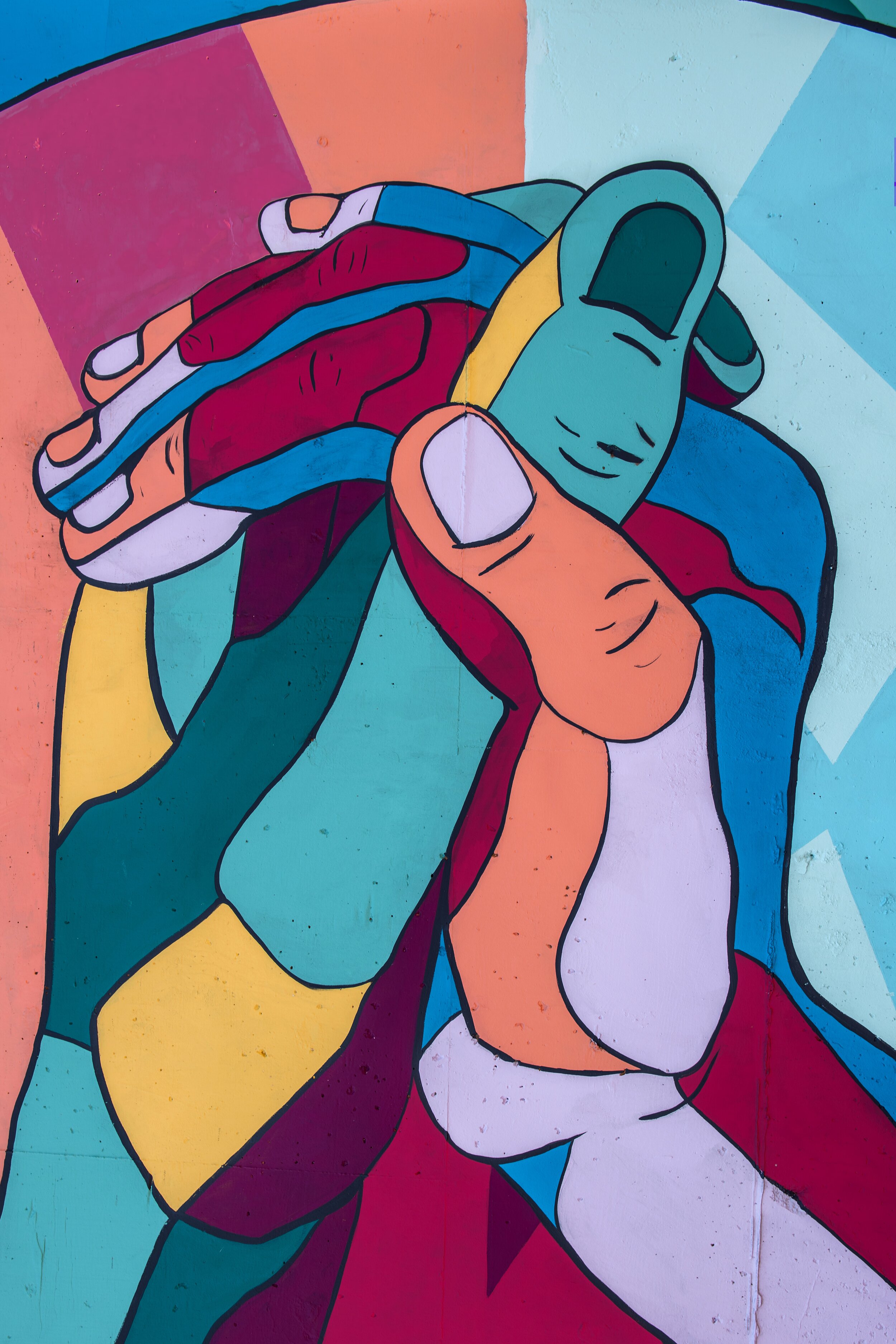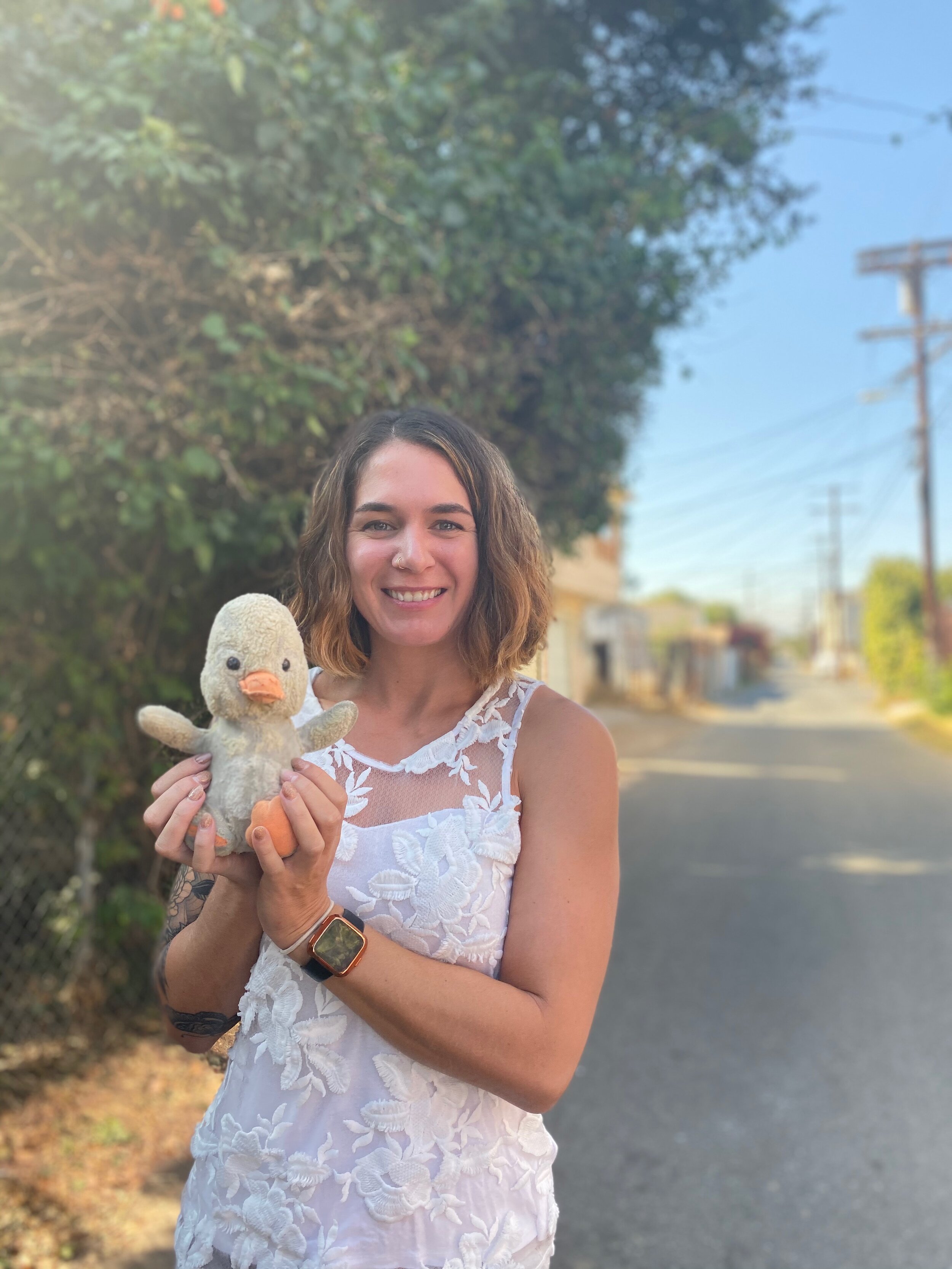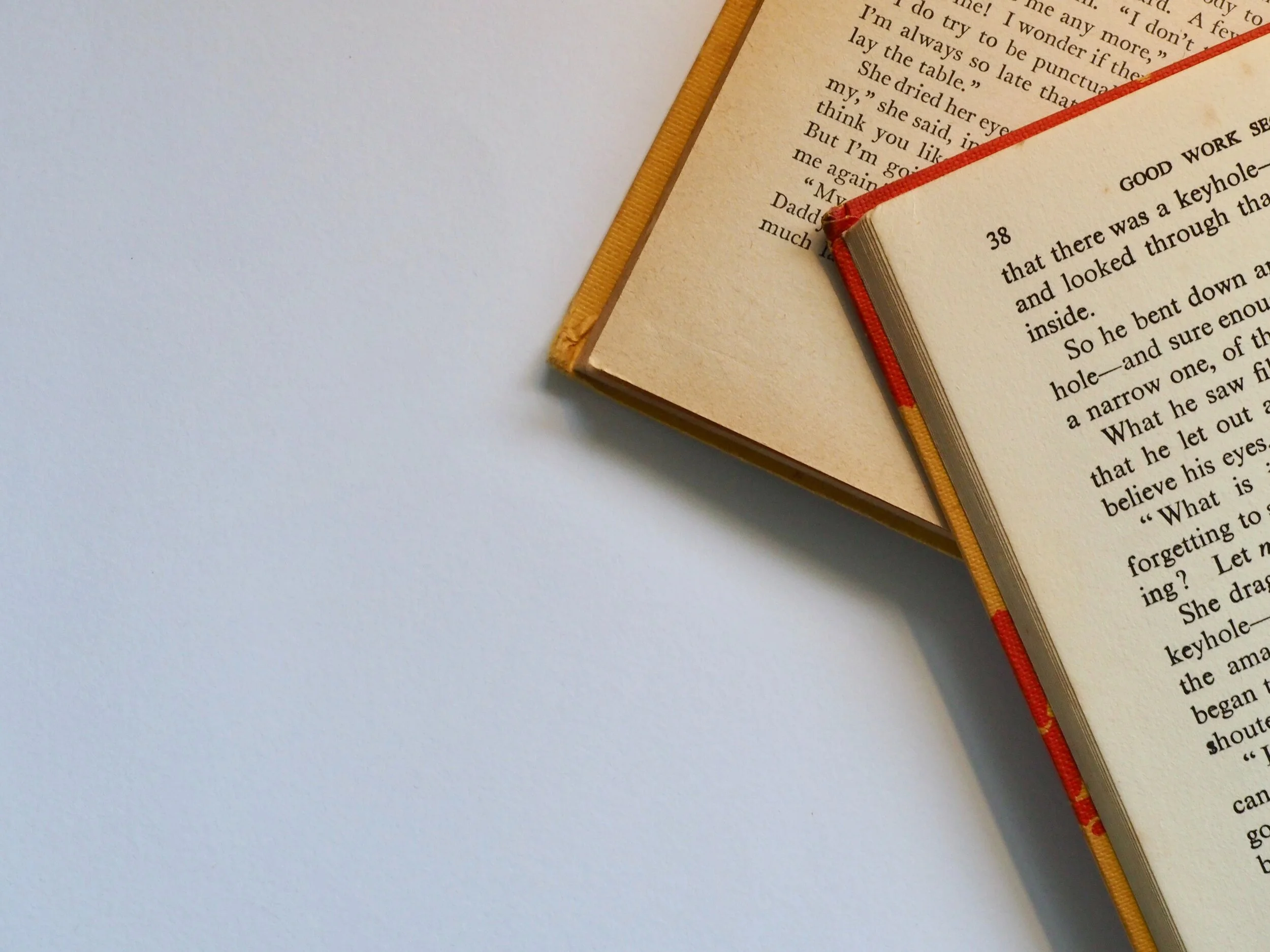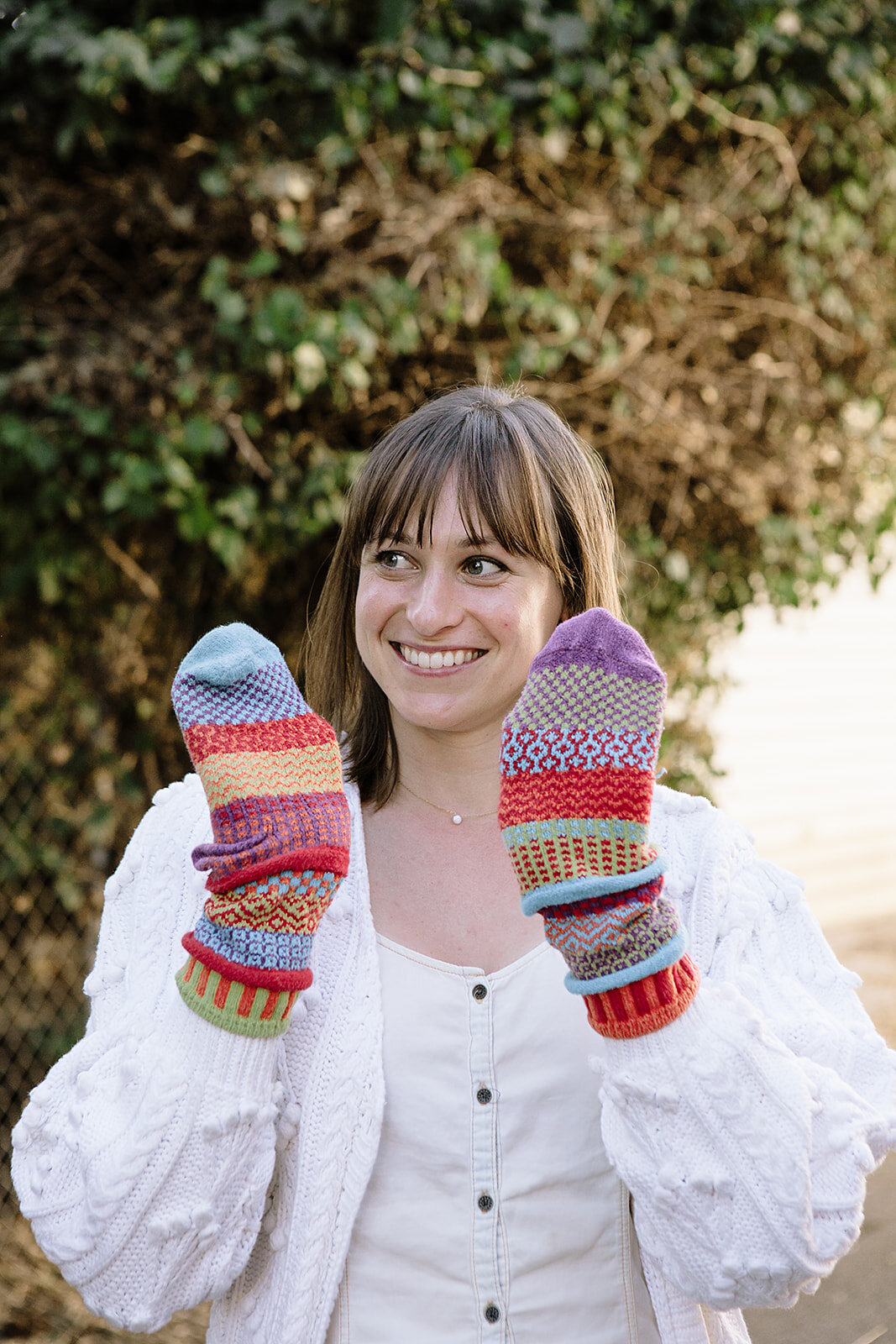MV: There are implicit bias classes that at least give you an access point to know that this is some biases that you have. I know where I’m from, Indianapolis, we have an undoing racism course that I know it used to be free where it’s like anybody could come. Whether that’s the board of organizations or that was just a person who just walked off the street and was just sort of interested in taking that journey. And so...I was looking at the last interview that was done with the doctor…
TM: Yeah, Lynne Jacobs, yeah.
MV: And I saw the list of books and resources that were there at the end, so there’s a lot of knowledge out there, and there are a lot of ways for people to kind of get started on taking that journey.
TM: I know on Instagram there were a lot of people following Layla Saad who did the Me and White Supremacy workbook. And I think she now has a book. White followers were going through this course...it was about implicit bias. There is a real self-reflective thing that is being called for.
MV: Yeah.
TM: What you said about language...giving voice...really naming things also resonates with my idea of psychoanalysis or psychotherapy...is the idea of “speaking the unspeakable” and giving voice to things from the unconscious. Also, you were saying that your work is hopeful. There’s hope in it, too. To close our conversation a bit....How does hope...I don’t know...What do you envision for the future of this country? Gosh, that feels like such a BIG question!
MV: We’re in a deep time of reckoning. What we are seeing and what we are experiencing....we talk about polarization and this intense socio-political climate that we’re living in where folks feel so divided; feel more separate from each other. Honestly, I look at that because... As psychotherapists, you do the work of taking people through the journey of the subconscious, through the ego...of getting through that deeper sediment that blinds us all. And we have to get through all that ugliness sometimes. Right? And I’ve been in therapy…
TM: Right, you generally feel a lot worse before you start to feel better.
MV: Miserable!
TM: Yeah, miserable. (Laughs).
MV: It can take a long time. You feel miserable. You are confronting your shadow. In this country, we have not done a good job. We have wanted to jump these steps when we need to go back. And we have to really….I use this term “repentant.” [We have to repent.] I know it’s gonna have a religious connotation. But when I look at the root meaning of that word, it actually means “to turn.”
TM: Oh, wow.
MV: Yeah, making a turn. The only way to do that is to reckon with what’s been done. And we don’t want to do that as a country. Some of us do and some of us can’t help but live in that reality. The white majority in this country….the systemic oppression and the problems we have in this country stem from this idea of superiority, colonialism, and “white is right” and through that belief there were Native Americans that were decimated and displaced; there were Africans that were stolen and brought here for free labor and who built this country for hundreds of years and who are still second class citizens. We have to start from the very beginning and go back and say “Wow, this has been done. And we have been responsible.” If I’m living today, I feel like “Oh no…”
TM: Right, that idea of “it has nothing to do with me.”
MV: I think white people have to reckon with the fact that they have benefitted from a system. That reckoning has to happen. It can start small. It can start within an organization, within a church, within a neighborhood. It’s not gonna trickle down. Looking like our government now, it’s not gonna trickle down. Maybe it will make its way up. I think that sometimes….I know for sure what we are seeing is a result of what we have not been willing to deal with. There are so many of us asking: How did we get here? Why are we here? Why are things so divided? Why are things so intense? And doing that [the work of reckoning with our racist history] means doing the long, deep shadow work and that’s where it has to start -- taking that long, honest look at what’s been done and who has benefited and who has not benefited. And so, I was getting to the hope in that….
TM: I was thinking about that...Yeah, hope can be so loaded. I’m thinking of this interview that Stephen Colbert did with Ta-Nehisi Coates. Where Colbert asks Coates what he is hopeful about with his divide and polarization [in terms of race relations in the US]. And Coates said “I don’t have any hope.” I was thinking “Gosh, hope is such a loaded term. ...I love the language of repenting and turning. And I think your poetry...it’s like….there’s delight and joy and pleasure in it, too.
MV: Thank you for that reflection. That’s honestly so important for me, Taz. It’s important for me to also be a part of beauty-making.
TM: Yeah, it’s so moving and so beautiful. It’s aesthetically beautiful.
MV: Thank you. I truly believe that love is the strongest force in the universe. And I know how love can sound like a cop-out when we are facing really threatening issues. Everyone wants to talk about love. But I don’t cheapen love. Real love challenges us to grow. It challenges us to transform, to change, and to live up to who we can be as human beings. And I believe in that. The reason why I get up... If I get up in the morning...existing in this world, as tragic and disheartening as it can sometimes be...The reason why I walk out my door and say hello and good morning to someone that I don’t know is because deep inside, I want to believe in the best of humanity - that we all have something divine; that we all have something in us that is truly, truly good. If we can get through this shadow energy; if we can reckon with ourselves...if we can do that true repenting and that true reconciling, then we can create a better world. To call myself a social justice activist or advocate, but then not believe it could get better, I feel like it’s counterproductive. I’m working for a future that I want for generations...when you and I are no longer here...like in 7 generations...I want them to be so further along in this conversation. All of us can commit to that day by day...whether we want to call it hope or something else. The truth is that when we work for change, that’s exactly what we are doing - we are working to create something better. Even if I don’t see it in my lifetime, Taz… I want my grandchildren’s children, children, children... to be able to see; to live in a better world; to see a world where they are not threatened; where have a sense of belonging. If I want it for them, then I have to truly want that for every human being on this earth, no matter what color they are. I have to truly want that for every human being. In my deepest heart of hearts, I really do want that. And that’s where that hope, that beauty comes in. So, at the same time I’m speaking truth, it’s also undergirded with love and hope that we can really do better as human beings. Every day we are being called to do better and to make those small decisions. It can start in your neighborhood, with your friend, with your co-workers to have those conversations that allow us to heal these deep rifts that we have. I believe it’s possible.
TM: That feels like a good place to end, too. Again, that’s so moving. Affectively….ahhh...I can keep going. What you were saying about waking up...Like, Why wake up everyday and just be an adult?...it’s for the love of humanity. That was very moving. I wondered if you had any closing thoughts for now. Anything else on your mind?
MV: I live among beautiful people who are doing things everyday to move the notch forward. While it’s so easy to look at the news and be discouraged, you can also just look around and see….There’s a no-questions-asked food pantry in my community that just celebrated their 1-year anniversary of providing food to people without needing to ask all these questions about where you live, how much money you make, and if you deserve it. I have a friend who is doing that. And I have friends who are challenging policies that are harmful to the most marginalized. I have friends who are talking to city officials about responsible policing. I have friends who are running after school clubs to mentor young people. I have friends who are using their art to provoke dialogue around issues and who are using their art to beautify neighborhoods. My best friend is a brilliant teacher. I look around in my world and I do see the good. I think the good is contagious. The bad is too (Laughs). But the good is contagious. We can all do something. If we can look at the turning...I do see some important dialogue. We can argue about how late we are. But I do feel like we are having more dialogue about race relations in this country, at least from my purview and my experience. And about all kinds of other issues about who benefits and who doesn’t. I think that the turmoil is part of the process. I think if we stay focused on that...I think that focus has to be really intentional, not just complacency. All of us can do something. I just want to encourage others to be part of the change and to also look around at your community to those that are doing the work and trying to help. I see you doing this...or I see you started this non-profit organization where you’re helping the homeless...Can I join the board? Or can I help spread the word? Or help in some way? Seeing the good, valuing the good, and coming alongside the good!
TM: Those are helpful, small, actionable things. I love that idea of a turn - a turn to love, a love turn. Thank you so much for your time. And for your energy and your mind and your heart.
MV: I’m happy just to share. And grateful for the work that you guys are doing there. Let’s keep healing. Let’s keep at it!





























